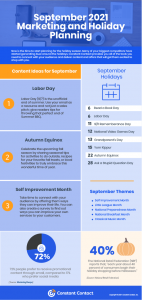Columnist Lewis Gersh discusses the misconceptions surrounding omnichannel marketing and the direction that marketers need to be heading with it.

About six years ago, our industry was subjected to yet another buzzword: omnichannel. Specific to marketing, the term caused more confusion than clarity. What did, and does, it really mean? No one really knew or knows. But of course, everyone threw the term around anyway.
The way I saw it, omnichannel was a way to look at marketing spend across multiple channels like digital, outdoor, TV, in-store, print, radio and more, with the ability to fine-tune budgeting across all of them to make it more effective and efficient. Of course, measuring all of that proved to be very difficult beyond a dashboard of spend.
Even more challenging was determining what drove action for which shoppers and when. If you’re marketing across all those channels, how can you accurately tell which touch point, on which channel, had a greater impact on its own or in combination with any others? You really couldn’t, and you still can’t.
The idea of omnichannel was to make our marketing smarter, but when the rubber hit the road, it was nearly impossible to do. Even an integrated dashboard that provides detailed cross-channel data around spend and results typically yields zero insight into causation or correlation of attribution. We’ve yet to master that science.
Rethinking omnichannel
To my mind, looking at omnichannel from a campaign-outward perspective is hopelessly misguided. If you ask any direct marketer what they rely on to enhance their targets, they’ll tell you the best data comes from regression analysis on conversions. It’s the most reliable way to uncover what’s working — and what they need to be doing more of and test against.
So, what if omnichannel wasn’t about pushing out marketing, but instead about regression analysis by purchase channel? Each purchase maps back to one individual person in one household. Therefore, if we look at where people make purchases by channel, and then append data about the product segment and what level of consideration the purchase required, we’ll have some incredibly useful data about that buyer and that purchase.
If we can take a step back from there and also look at the type of product, and then which ads the person saw before buying, we can gain a lot of insight into what actually drove purchase behavior. We can see what types of things certain people only buy online, which items buyers will only pick up a phone to call for and which types of products some people tend to buy at physical locations.
Keep in mind, of course, that close to 90 percent of purchases still occur offline. So-called omnichannel marketers, who are only looking to digital channels to convert customers, are taking an approach so intrinsically myopic, it’s almost laughable.
However, if you take purchase channel as the basis for an omnichannel approach, you can leverage almost 100 percent of purchases (save for cash purchases and unregistered gift cards), and you can use regression analysis to drill down to household and individual. Who are they? What is their propensity to want to transact by product? Which ads were they exposed to? What led them to purchase and why?
This is the direction all retail marketers should be heading, and it can lead to the kind of insights that provide a virtual roadmap to engagement and conversion.
90/90/90
Here is my 90/90/90 thesis for retail marketing. (Except for the last item on the list, these are based on my own estimates, not hard data):
- 90 percent of all intent data is available online on a one-to-one basis.
- 90 percent of meaningful, higher-consideration purchase decisions happen at home.
- 90 percent of purchases still occur offline.
Why is this important? First off, marketers have access to intent signals from digital, so they know when a consumer is in a buying state of mind. However, most marketers literally squander that data. They look no further than “intent to purchase” and spam that shopper with ads featuring the item she was viewing on their site. They literally chase that shopper around the web with ads that scream, “HERE’S THAT SWEATER!” “WANT TO BUY THAT SWEATER?” “HOW ABOUT NOW? SWEATER?”
That’s sheer folly. Intent signals are incredibly powerful information — but they’re greatly diminished if we just look at them as a signal on its own to push out media indiscriminately. If we instead understand where and how that individual has a propensity to convert, we could use those signals much more purposefully.
And since we know that 90 percent of the consideration process happens at home and an equal percentage of purchases happen offline, does all that retargeting as digital for e-commerce really make sense? Surely at least some of that marketing should occur offline. After all, no one has ever taped a banner ad to the fridge and asked, “Honey, is this the one you wanted?”
Regression analysis can help marketers gain much more insight. By tracing behaviors back from the purchase, marketers can optimize along the buyer’s entire decision-making journey, offering them whatever gets them to the next point of purchase — regardless of whether that shopper prefers to buy in-store or by phone. That’s what omnichannel should really be about.
Opinions expressed in this article are those of the guest author and not necessarily Marketing Land. Staff authors are listed here.
Marketing Land – Internet Marketing News, Strategies & Tips
(75)
Report Post







